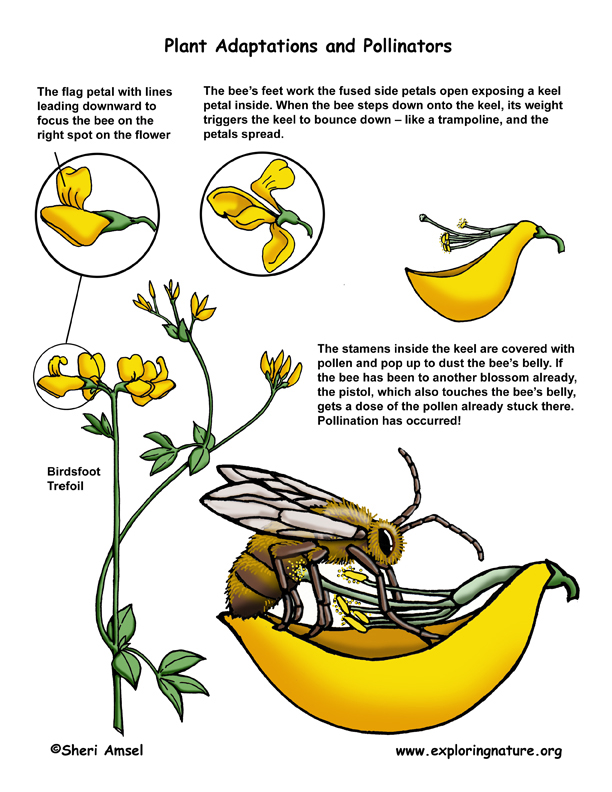

Adaptation in a population of living things happens as a result of an adaptive trait. This is any inheritable trait that increases it’s survival rate so that it can live longer, reproduce longer, and have more offspring (that also have that trait). Sometimes two different species can develop adaptive traits together to suit both of them. This may also be called mutualism – a symbiotic relationship.
Birdsfoot trefoil is a common pea plant grown all over North America for feeding livestock and covering farm fields. Though common, it has a complicated flower, making it difficult to get inside to collect nectar or pollinate. Only bees can figure out how to enter a birdsfoot treefoil blossom and the honeybee is especially good at it.
When a honeybee lands on a birdsfoot trefoil blossom, it looks for nectar inside the top petal, called the flag, because it has guiding lines pointing to its base, but the nectar isn’t there. While it stands on the fused side petals looking for nectar, the bee’s feet work the petals open exposing a keel petal inside. (See illustrated handout.)
When the bee steps down onto the keel, its weight triggers the keel to bounce down – like a trampoline, and the petals spread. Then the stamens inside the keel that are covered with pollen will pop up and dust the bee’s belly. If the bee has been to another blossom already, the pistol, which also touches the bees belly, gets a dose of the pollen already stuck there. Pollination has occurred!
Some might wonder what the advantage is of having only one kind of insect to pollinate a plant. Why wouldn’t the plant want every insect that lands on it to pollinate it? One theory is that when a honeybee finds a flower where the nectar is ready, it signals the other bees and they all come to collect nectar at once so a lot of pollination occurs. A difficult flower makes it more likely that the nectar will be there for a visiting honeybee.
Discussion Questions and Critical Thinking:
1. Can you think of any other reason why this plant is specific to one pollinator?
2. Name other ways plants might be pollinated other than insects.
3. What might happen to the birdsfoot trefoil if the honeybees disappear?
